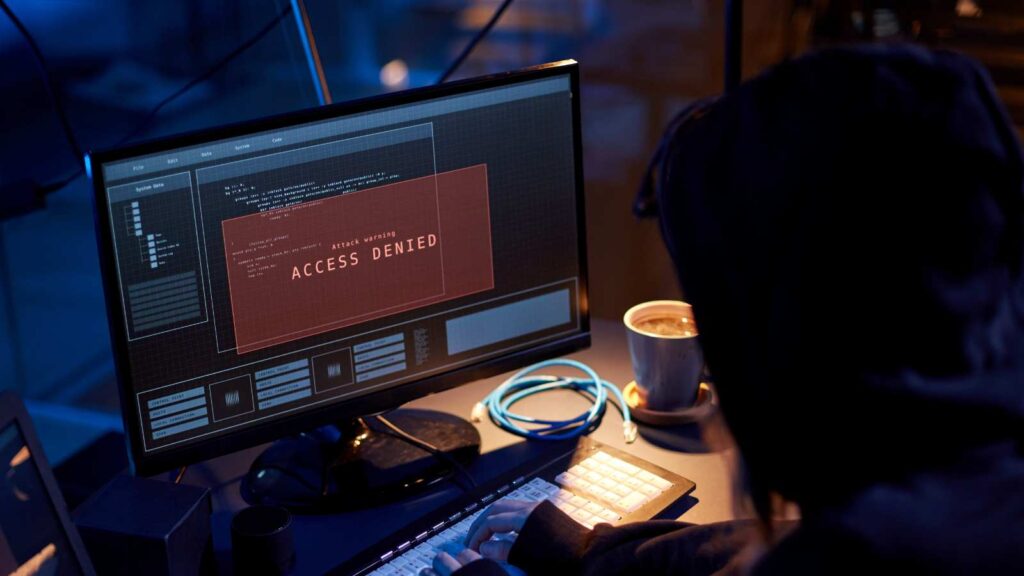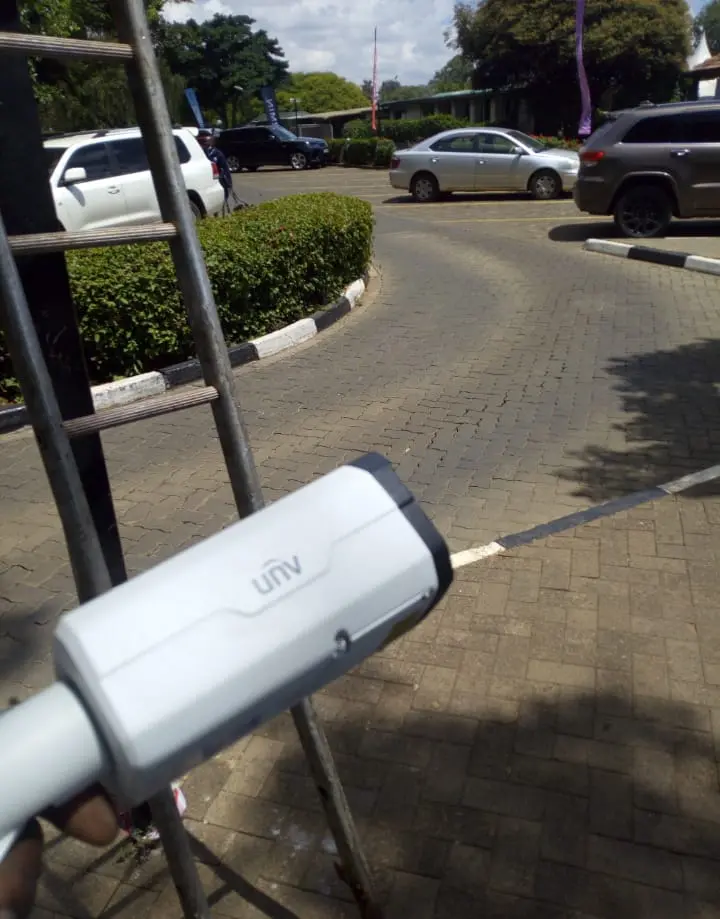Understanding the Attack Vector.
Cybercriminals Exploit Microsoft Teams. Microsoft Teams is often perceived as a secure internal communication tool, leading to a false sense of security among users. Attackers exploit this trust by sending malicious messages or initiating calls that appear to originate from legitimate internal sources. These deceptive communications often contain links or attachments that, when interacted with, execute harmful scripts or install malware on the victim’s system.FieldEffect.

The attack usually begins when someone receives a message on Microsoft Teams that looks like it’s from a coworker or IT support. The message may include a file or a link that seems harmless but is actually a trap. If the person clicks on it, a hidden program starts running on their computer. This program doesn’t show anything obvious, but behind the scenes, it opens the door for the attacker to sneak in. It’s like clicking a link in an email and unknowingly letting a stranger into your home office through a virtual backdoor.

Once inside, the attacker uses clever tricks to stay hidden. They disguise their tools as trustworthy software and even use built-in Windows programs to avoid looking suspicious. In one case, they used a remote support tool called QuickAssist—meant to help people—to quietly take control of the computer. Then they install more hidden software, like a digital spy, that lets them come back anytime without being noticed. This entire attack relies on fooling people and using tools in unexpected ways, which is why staying alert and having smart security systems that watch for unusual behavior is so important.
The Attack Lifecycle: A Step-by-Step Breakdown.
Stage 1: Initial Access via Microsoft Teams Message
The attack begins with a seemingly harmless message sent via Microsoft Teams — a widely trusted platform used by millions of organizations for collaboration and communication. The attacker sends a malicious link or file to a targeted user, often posing as a colleague or IT support representative.
- Payload Delivery: Embedded in the message is a file or URL that initiates a PowerShell script download when opened.
- Social Engineering: Victims are lured into executing the payload under the pretense of urgency or legitimacy.
Stage 2: Execution of Malicious PowerShell Payload
Once the user interacts with the payload, the attack script is executed. This PowerShell-based payload acts as the first-stage loader.
- Command and Control (C2) Communication: The script may connect to an external domain to download further components.
- Living-off-the-Land Binaries (LOLBins): Attackers use trusted Windows utilities (e.g.,
certutil,mshta,wscript,rundll32) to execute commands and evade detection.
Why It Matters: These LOLBins are typically not flagged by antivirus or EDR solutions because they are legitimate Windows components.
Stage 3: Deployment of Remote Access Tooling
The PowerShell payload proceeds to install or initiate Remote Access Tools (RATs) that enable the attacker to maintain an interactive session with the compromised system.
- Tools May Include:
- Cobalt Strike (legitimate red-team tool repurposed for malicious use)
- AnyDesk or TeamViewer (if misused)
- Custom-developed RATs with encrypted communication channels
Note: Some tools are signed and appear to be legitimate, thus bypassing common endpoint protections.
Stage 4: DLL Side-Loading
To strengthen persistence and continue evading detection, the attackers use DLL Side-Loading — a technique where a legitimate signed executable loads a malicious DLL from a local path.
- Why It Works: The operating system trusts the executable and inadvertently loads the attacker’s malicious DLL because it shares the same name and path expected by the executable.
- Signed Files: Using digitally signed software enhances the perceived legitimacy of the tools in the eyes of both users and many security solutions.
Stage 5: Persistence via JavaScript-Based Backdoor Perhaps the most notable component of this attack is the final stage — a JavaScript-based backdoor.
- Execution Environment: The backdoor may leverage Windows Script Host (WSH) or Electron-based apps that allow JavaScript execution.
- Capabilities:
- Keylogging
- File exfiltration
- Credential harvesting
- Command execution
- Scheduled task creation for persistence
Stealth Mode: JavaScript payloads can be obfuscated and encoded to avoid detection by traditional signature-based tools.
Why This Attack Is So Dangerous
- Multi-Stage and Modular: Each phase is decoupled, making detection and disruption difficult.
- Trusted Channels: Uses legitimate platforms (Microsoft Teams), signed binaries, and Windows-native tools.
- Living Off the Land: The attacker blends in with normal user behavior and system operations.
- Advanced Evasion: By using side-loading and JavaScript scripting, the attack bypasses many conventional security layers.
Notable Incidents
- Black Basta Ransomware Campaign: Affiliates of the Black Basta ransomware group have been observed abusing Microsoft Teams to initiate chats and meetings with internal users. Posing as IT support, they send a barrage of spam messages followed by a Teams call, convincing employees to grant remote access, which is then used to deploy malware. TeckPath+18FieldEffect+18Rapid7+18
- DarkGate Malware Deployment: In a sophisticated social engineering attack, threat actors used voice phishing (vishing) via Microsoft Teams. They impersonated known clients during Teams calls, persuading victims to download remote access tools like AnyDesk, subsequently deploying the DarkGate malware. Darktrace+8socprime.com+8Trend Micro+8
- Storm-2372 Phishing Campaign: This campaign involved phishing attacks masquerading as Microsoft Teams meeting invitations delivered through email. When targets clicked the invitation, they were prompted to authenticate using a threat actor-generated device code, allowing the attackers to steal authenticated sessions. Microsoft
Tactics Employed by Attackers
- Impersonation of IT Support: Attackers pose as internal IT staff, contacting employees via Teams messages or calls, claiming to address technical issues or security concerns.Latest news & breaking headlines+1FieldEffect+1
- Exploitation of Default Configurations: Threat actors exploit default Microsoft Teams configurations that allow external users to initiate chats and meetings with internal users, facilitating unauthorized access. FieldEffect
- Use of Malicious Links and Attachments: Attackers send messages containing links or attachments that, when interacted with, execute malicious scripts or install malware.
Strategies for Defense
To mitigate the risks associated with these sophisticated attacks, organizations should consider implementing the following measures:
- Enhance User Awareness and Training: Regularly educate employees about the latest phishing tactics and the importance of verifying unexpected communications, even if they appear to come from internal sources.
- Restrict External Communications: Review and adjust Microsoft Teams settings to limit or monitor communications from external users, reducing the risk of unauthorized access.
- Implement Advanced Threat Protection: Utilize security solutions that offer real-time scanning of links and attachments within Teams messages to detect and block malicious content.
- Monitor and Audit Teams Activity: Regularly monitor Teams usage for unusual activity, such as unexpected messages or meeting requests from unknown users, and conduct audits to ensure compliance with security policies.
- Establish Incident Response Protocols: Develop and regularly update incident response plans that include procedures for addressing compromises originating from collaboration platforms like Microsoft Teams.
Mitigating the Microsoft Teams Attack: Proactive Defense Against Modern Threats
Introduction
The recent discovery of a sophisticated Microsoft Teams-based cyberattack has highlighted just how critical it is to defend every communication channel — not just email. With attackers now weaponizing collaboration tools and leveraging trusted applications like QuickAssist and PowerShell, organizations must take a proactive stance to cybersecurity.
Experts such as J. Stephen Kowski from SlashNext and Jason Soroko from Sectigo have weighed in on what this attack teaches us and how businesses can fortify their defenses.
J. Stephen Kowski, Field CTO at SlashNext Email Security, explained that the Ontinue research demonstrates how threat actors are getting more creative with AI-powered voice cloning to trick users. https://www.scworld.com/news/threat-actor-using-vishing-ms-quickassist-and-teams-can-potentially-drop-ransomware
Mitigation Strategies: Proactive Measures to Thwart These Attacks
1. Real-Time Scanning Across All Communication Channels
Most organizations focus their defenses on email, but attackers are moving to overlooked channels like Teams, Slack, Zoom, and SMS.
Action Points:
- Deploy multi-channel threat detection tools.
- Integrate real-time scanning into collaboration platforms via APIs or security plugins.
- Use solutions that employ AI-driven analysis (e.g., SlashNext) to detect phishing, malware, and QR-code deception.
2. Monitor for PowerShell and QuickAssist Abuse
PowerShell remains one of the most powerful tools in a threat actor’s toolkit. When combined with QuickAssist — a legitimate Windows remote support feature — attackers gain easy access under the radar.
Action Points:
- Enable PowerShell logging and monitoring (ScriptBlock logging, Module logging).
- Set up alerts for unexpected use of QuickAssist or similar remote tools.
- Monitor execution of signed binaries from nonstandard locations.
3. Detect and Prevent DLL SideloadingDLL sideloading allows malicious actors to inject code into trusted processes without raising red flags.
Action Points:
- Enforce code integrity policies via Windows Defender Application Control (WDAC).
- Audit installations and monitor for unsigned or suspicious DLLs loaded by signed applications.
- Limit write permissions to directories where DLLs can be side-loaded.
4. Employ Behavioral Analytics and Threat Hunting
Signature-based detection alone can’t stop stealthy, modular attacks.
Action Points:
- Use behavioral analytics platforms that detect anomalies like:
- Abnormal script executions
- Sudden privilege escalations
- New scheduled tasks or hidden services
- Conduct regular threat hunts focused on collaboration tools, scripting engines, and system process behavior.
5. Educate and Empower Employees
The human layer remains the weakest link. Proper training can reduce the chance of someone clicking that malicious Teams message.
Action Points:
- Launch awareness campaigns about threats via Teams, Slack, and social engineering techniques.
- Provide simulated phishing exercises across multiple communication platforms.
- Reinforce the importance of verifying unexpected requests, even from seemingly known contacts.
Red Flags to Watch For (as per Jason Soroko)
- Teams messages containing suspicious PowerShell commands
- Unusual usage of Microsoft QuickAssist
- Digitally signed binaries running from unfamiliar locations
- Unexpected system connections to known C2 domains
- Obfuscated JavaScript or encoded commands in scheduled tasks
The Future of Threat Defense: A Multi-Layered Approach
As organizations continue to adopt hybrid work models, securing endpoints, identities, and communication tools is more critical than ever.
Recommended Tools & Approaches
- Endpoint Detection and Response (EDR) with behavioral AI
- Zero Trust Network Access (ZTNA) to minimize lateral movement
- Unified Threat Management (UTM) for holistic scanning
- Secure Web Gateways with malicious link and file filtering
- Threat Intelligence Feeds to enrich incident response
















